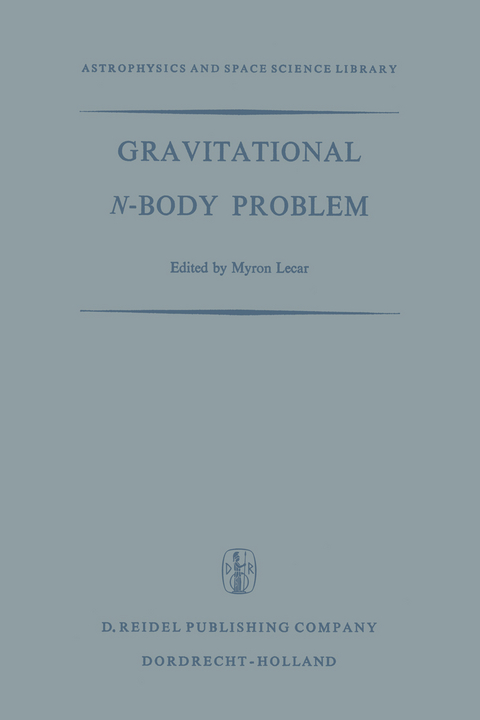
Gravitational N-Body Problem
Kluwer Academic Publishers (Verlag)
9789027702036 (ISBN)
- Keine Verlagsinformationen verfügbar
- Artikel merken
I / Collisional Systems.- A. Analytic Treatments.- Collisional Processes in Stellar Systems.- Polarization Clouds and Dynamical Friction.- A Certain Discontinuous Markov Process in Stellar Dynamics.- Relaxation Times in Strictly Disk Systems.- B. Numerical Experiments.- Numerical Experiments on the N-Body Problem.- Monte Carlo Models of Star Clusters.- A Fluid-Dynamical Method for Computing the Evolution of Star Clusters.- On the Lifetimes of Galactic Clusters.- Disruption of Star Clusters through Passing Interstellar Clouds Investigated by Numerical Experiments.- Numerical Experiments on the Escape from Non-Isolated Clusters and the Formation of Multiple Stars.- Binary Evolution in Stellar Systems.- On the Dissolution Time of a Class of Binary Systems.- On the Reproducibility of Run-Away Stars Formed in Collapsing Clusters.- Numerical Experiments on Pair Correlations and on ‘Thermodynamics’.- A Numerical Experiment on Relaxation Times in Stellar Dynamics.- Recent Developments of Integrating the Gravitational Problem of N-Bodies.- A Multi-Particle Regularisation Technique.- The Use of Integrals in Numerical Integrations of the N-Body Problem.- II / Collisionless Systems.- A. Analytic Treatments.- Collisionless Stellar Dynamics.- On the Origin and Permanence of Galactic Spirals.- The Hose-Pipe Instability in Stellar Systems.- On the Stability of an Encounterless Self-Gravitating Constant Density System.- Exact Statistical Mechanics of a One-Dimensional Self-Gravitating System.- B. Numerical Experiments.- Numerical Experiments in Collisionless Systems.- Dynamics of Plane Stellar Systems.- Numerical Experiments in Spiral Structure.- On the Number of Isolating Integrals in Systems with Three Degrees of Freedom.- Numerical Experiments on Lynden-Bell’s Statistics.- APhase-Space Boundary Integration of the Vlasov Equation for Collisionless One-Dimensional Stellar Systems.- The Collective Relaxation of Two-Phase-Space-Density Collisionless One-Dimensional Selfgravitating Systems.- Numerical Experiments with a One-Dimensonal Gravitational System by an Euler-Type Method (Summary).- N-Body Problem and Gas Dynamics in One Dimension (Abstract).- III / Numerical Experiments and Analytical Treatments in Plasma Physics.- Computer Simulation of Plasmas.- Enhancement of Relaxation Processes by Collective Effects.- Stability Properties for Encounterless Self-Gravitational Stellar Gas and Plasma.- IV / Summary of the Colloquium.- V / Appendix: Methods of Computer Simulation of the Gravitational N-Body Problem.- Direct Integration Methods of the N-Body Problem.- Treatment of Close Approaches in the Numerical Integration of the Gravitational Problem of N Bodies.- The Monte Carlo Method.- The Fluid-Dynamical Method.- The Model of Spherical Concentric Shells.- Integration Methods where Force is Obtained from the Smoothed Gravitational Field.
| Reihe/Serie | Astrophysics and Space Science Library ; 31 |
|---|---|
| Zusatzinfo | XI, 441 p. |
| Verlagsort | Dordrecht |
| Sprache | englisch |
| Maße | 160 x 240 mm |
| Themenwelt | Naturwissenschaften ► Physik / Astronomie ► Astronomie / Astrophysik |
| Naturwissenschaften ► Physik / Astronomie ► Mechanik | |
| ISBN-13 | 9789027702036 / 9789027702036 |
| Zustand | Neuware |
| Informationen gemäß Produktsicherheitsverordnung (GPSR) | |
| Haben Sie eine Frage zum Produkt? |
aus dem Bereich


